Fire and Rescue Service Wildfire Operational Guidance
This guidance has been produced to give fire and rescue service personnel an additional understanding and awareness of the phenomenon of wildfire. It examines the hazards, risks and controls relating to Fire and Rescue Service personnel, the personnel of other agencies and members of the public at Incidents of wildfire. It also provides a point of reference for those who may be called upon to plan for wildfire events and for those incident commanders and personnel responding to such incidents.
8B Technical Considerations
8B1 The Effects of Fuel
Introduction to Fuel
8B1.01 Within the wildfire environment the main source of fuel is vegetation. The type of fuel, its size and the way the vegetation is arranged across the landscape will inevitably affect the way it burns. Understanding how vegetation interacts with fire is important as such knowledge can be used to understand present fire behaviour, as well as predicting what it is likely to be in the future. This understanding is not limited to fire intensity but can also provide an accurate evaluation of future rate of spread and expected flame length.
8B1.02 The behaviour of a fire in a given fuel source is dependent upon its:
- Size and Shape
- Quantity
- Arrangement
- Moisture content
- Type
8B1.03 Effective management of wildfire requires that there is an appropriate understanding of how each of these factors affect the way vegetation will burn and the influence they have on fire behaviour.
Size and Shape
8B1.04 The size and shape of the available fuel is important, particularly in regard to their ease of ignition. Smaller fuels, referred to as 'fine fuels', are more receptive to fire, while larger or more coarse fuel types generally rely on their interaction with fires in finer fuels before they will ignite.
8B1.05 The relationship between any given fuel's surface area and its volume, and the fuel's size and shape, strongly influences the ease of ignition. The surface area of finer fuels, such as grass or heather, is much greater than the equivalent volume of coarser fuels such as branches and logs. Fuels with a higher surface area to volume, dry quicker and require less exposure to heat for them to be raised to their ignition point.
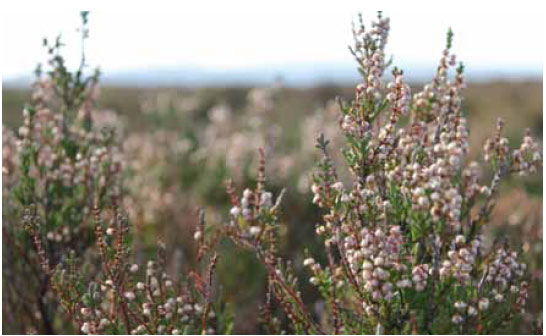
Photo B1.1 Heather which provides a plentiful supply of fine fuel
Once an ignition occurs, the shape, structure and the composition of the vegetation - such as the proportion and mix of fine and coarse fuels - will then influence fire development.
Fine and Coarse Fuels
8B1.06 Fine fuels are considered to be those with a diameter of up to 6mm, and include grass, small stems and the leaves of low lying shrubs such as heather. Fine fuels can also be found in huge quantities in larger plants, i.e. needles on conifer trees.
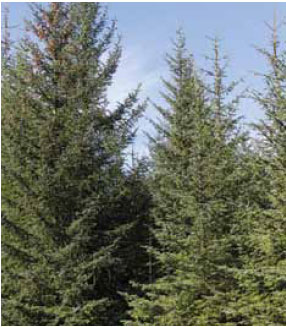
Photo B1.2 Conifer trees consisting of fine (needles) and coarse fuel (trunk and branches) in contact with surface fuels
8B1.07 Fuels that are over 6mm in diameter are described as 'coarse fuel' and include twigs, branches, and tree trunks.
Fine fuels will strongly affect:
- Fire intensity, particularly at the head of the fire.
- Rate of forward and lateral motion of the fire.
- Flame length.
- Likelihood of extreme fire behaviour events.
- Horizontal and vertical fire development.
- Aerial fire activity.
- Increased ignitions caused by spot fires.
8B1.08 Fine fuels influence the forward and vertical motion of a fire. Because of their size, they are burnt off quickly resulting in high fire activity and longer flame length at the fire edge - particularly at the head of the fire. The mix ratio of fine and coarse fuels is also important. The amount of fine fuels present will always have a significant impact on fire development and behaviour. It is important to understand that some plants, such as trees and shrubs, consist of both fine and coarse fuel types.
8B1.09 After the finer fuels have burnt, the coarse fuels continue to burn in what is termed 'the flaming zone' which is located behind the fire edge. The fire intensity within the flaming zone is dependent upon the quantity and size of the coarse fuels and their arrangement.
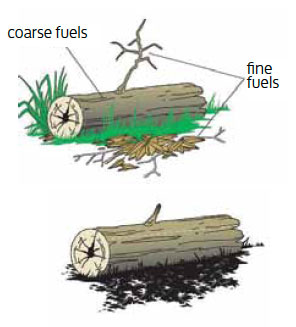
Fig B1.1 This example indicates how fine fuels, burn off quickly and, where the coarse fuel is too large, there is little interaction
8B1.10 Consideration should always be given to the fact that finer fuels dry out much more readily than coarser ones, and that the intensity of a fire in coarser fuel types may be restricted by their higher moisture content.
Characteristics
| Characteristics of fine fuel |
Characteristics of coarse fuel |
|---|---|
| Up to 6mm in diameter |
More than 6mm in diameter |
| Consists of leaves, grass and small twigs either living on the plant or present in the surface litter |
Consists of twigs, branches and logs either living or found present in the surface litter |
| Dries quickly |
Dries slower than fine fuel depending on diameter |
| Rapid loss of moisture when preheated |
Slower loss of moisture when preheated |
| Ignites easily |
Depends initially on activity in fine fuels as a source of ignition |
| Burns readily normally at or near to the |
Burns more slowly sometimes for a considerable length of time |
| Gives momentum to rate of spread |
Active in the flaming zone within the fire perimeter |
| More fine fuels present will increase |
Does not have a significant effect on fire spread |
| Can result in extreme fire behaviour such as torching, crowning and spotting |
|
Quantity
8B1.11 The proportion of fine and coarse fuels within a fuel arrangement can alter the physical interaction between the two and the subsequent fire behaviour. If there is an abundance of fine fuels, but limited coarse fuels, then the fire will burn with intensity at the fire edge, leaving little, or no fire activity once the fine fuels have been burned.
8B1.12 Whenever there is an appropriate mix of fuels of different sizes then the fine fuels will ignite more coarse fuel and a flaming zone will be left burning within the fire perimeter. The mixture of fine and coarse fuels, and the way these fuels are arranged, will influence the speed, intensity and duration of a fire.
Fuel Arrangement
8B1.13 The way in which fuel is arranged plays an important part in the way fire develops and fire intensity. The principal factors to consider are the continuity of vegetation across the landscape and how the vertical and horizontal fuel arrangement is able to interact.
Fuel Continuity and Uniformity
8B1.14 Fuel continuity is the extent to which the surface of the ground is covered by vegetation, and includes the degree to which the fuel is connected within its horizontal and vertical arrangement.
8B1.15 Fire within the UK wildfire environment mainly travels by radiated heat and flame contact. Therefore, closely arranged fuel will readily support fire development while more disparately spread fuel will limit a fire's movement across the landscape. This is relevant to both the vertical and horizontal motion of the fire.
8B1.16 Another important consideration is uniformity. If fuel is arranged in a uniform way across the landscape, there will be little change to fire behaviour as the fire moves through the vegetation. It is therefore easier to predict fire behaviour in uniform fuels than in a fire that is burning in mixed vegetation types, or fuels that have different arrangements.
Fuel Density
8B1.17 When fuel is tightly compacted there is less exposed fuel surface area and a lack of oxygen, due to restricted air/wind movement through the fuel, available to support combustion. This will impair fire development resulting in a fire of low intensity or smouldering fire. This type of fire behaviour is often found in peat fires or in the duff layer of forest litter such as in needle debris.
Vertical Arrangement
8B1.18 Vertical arrangement describes the way in which fuels are arranged from the ground up to the canopy levels of the vegetation. This arrangement will dictate how easily fire can develop vertically and is normally dependent upon sufficient fine fuels being available to allow an interaction between the different fuel levels. Vertical fire development may be supported by the arrangement of a single plant such as a conifer tree that can sometimes provide an unbroken fuel source from ground to canopy levels, or it may rely on fine fuels of different vegetation types acting as a ladder enabling fire to climb upwards from one fuel source to another.

Fig B1.2 A diagram of the vertical fuel arrangement
8B1.19 Fuels that provide a means for the fire to move vertically are known as 'ladder fuels'. The existence of ladder fuels should indicate to personnel that, there is the danger of a significant increase in fire intensity and propagation if the fire is able to penetrate into these fuels.
8B1.20 Fine fuels can exist at various levels within a fuel complex and fire behaviour can increase in intensity as it moves upwards into the aerial fuels. For example in a conifer wood, much of the fine fuel lying on or near the surface may be shaded and, as a result, remain cooler and damper than the fuels above. If the fire penetrates into these warmer and dryer aerial fuels there may be a substantial increase in the amount of fuel available to burn.
8B1.21 Such fire behaviour in the upper canopy or 'crown', may result in a separate and independent fire which can move with great speed and intensity through the finer fuels that have been subjected to preheating from both the sun above and the surface fire below.
8B1.22 The terminology associated with different levels of vertical arrangement can be used to describe fires that burn within them. For example, a fire that is burning in surface fuels should be described as a 'surface fire'. If a fire is active in fuels at different levels of the fuel arrangement it should be described making reference to all of the levels it has involvement with.
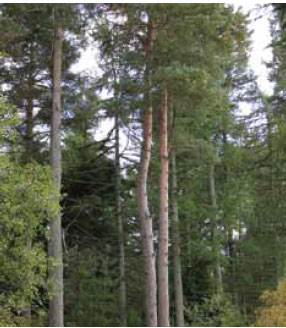
Photo B1.3 If the fuel arrangement provides a continuous ladder of fine fuels the fire will be able to move from ground level into the aerial fuels
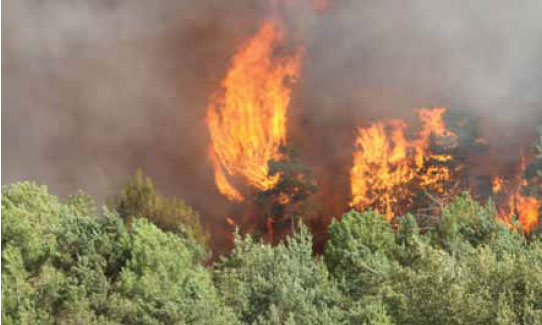
Photo B1.4 Where ladder fuels are in existence there is the possibility of extreme fire behaviour including torching and crowning
Horizontal Arrangement
8B1.23 Horizontal arrangement is the extent, and continuity, of fuel across the ground. Fire behaviour depends on whether fuel types vary significantly or whether they are uniform. For example. scrub may contain a mixture of vegetation that will support different fire intensities and behaviour, whilst vegetation that grows with more uniformity, such as grass or heather, will burn with more consistency.
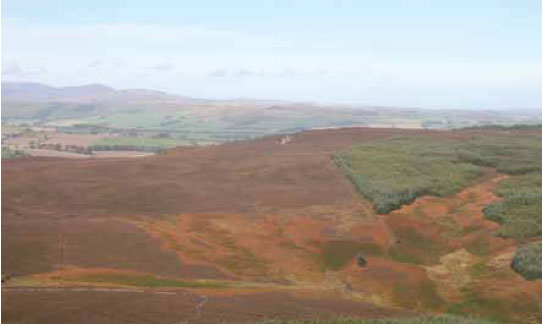
Photo B1.5 Heather moorland and coniferous woodland
Vertical Fire Development
Ground Fuels
8B1.24 These are fuels that are present below the surface. They can be the roots of vegetation, buried branches or twigs, or in some situations may be the soil itself. For example, peat can be a primary ground fuel source.
8B1.25 Ground fuel fires may burn for prolonged periods and can prove to be very difficult to extinguish without access to large volumes of water or a means to excavate and expose the burning material.
Surface Fuels
8B1.26 Surface fuels, which include both living and dead fuels, are those that are found on or close to ground level extending to a height of 0.5 metre. As they are close to the ground they are often in the shade of taller vegetation and can be in contact with the ground which may be wet. They consist of grasses and low shrubs, litter such as twigs and branches, logs, stumps and seedlings.
8B1.27 If surface fuels are dry then they can make a significant contribution to fire intensity and fire spread. Most wildfires start in, and are carried by, surface fuels.
Near Surface Fuels
8B1.28 These are fuels that are present above a height of 0.5 metre and up to a height of 1.5 metres. As they are above the surface the vegetation is normally aerated, and therefore dryer, but can consist of less dead fuel than can be found nearer the surface. The presence of Near Surface Fuels often allows the fire to penetrate into the elevated fuels above.
Elevated Fuels
8B1.29 Fuels that exist between a height of 1.5 metres and 3.5 metres including, the upper parts of shrubs, and/or, fuel contained within the lower parts of taller vegetation (such as the lower branches of trees) are described as elevated fuel. These are usually well aerated allowing them to dry quickly, if involved in fire there can be an increase in fire intensity and rate of spread. The flammability of elevated fuel depends on its dryness, and the amount of fine and dead fuels that are present.
Aerial Fuels
8B1.30 Aerial fuels are those that are found above the height of 3.5 metres and extend to the upper most parts of tall vegetation - known as the 'canopy'. Often the most extreme fire behaviour takes place once a fire penetrates into the aerial fuels. How intense an aerial fire becomes is normally dependent on the amount and continuity of fine fuel available to burn.
8B1.31 Where there is a lack of aerial fuel continuity or the trees are widely spaced, this can be described as an 'open canopy' arrangement and will usually result in single or small groups of trees being burnt in a process referred to as 'torching'.
8B1.32 Where aerial fuels are continuous (closed canopy) the continuity may allow for extreme fire behaviour and and prolonged 'crowning'activity.
Moisture Content
8B1.33 Fuel moisture content has a substantial effect on fire behaviour altering rate of spread, intensity and the likelihood of extreme fire behaviour. Both dead and living fuels contain moisture which affects the way they will react during a wildfire.
8B1.34 The amount of fuel moisture is dependent on a number of factors including:
- Type of vegetation.
- Weather conditions.
- Condition of the fuel (dead or alive).
- Size of fuel.
- Moisture content of the soil.
- Relative humidity.
- Time of year
8B1.35 Fine and coarse fuels do not dry at the same rate. Fine fuels require only a short-term drying environment; those exposed to strong sunlight may dry in minutes rather than hours. More coarse fuels rely on a longer period of supportive drying conditions, some will dry relatively quickly but others will take days or even weeks to dry out completely. The wetness or dryness of the ground will also impact on the process. Dry soil will draw moisture from fuel while wet soil will prevent moisture from evaporating from it.
The amount of moisture in a fuel will affect:
- Ease of ignition
- Rate of spread
- Fire activity
- Flame length
- Amount of extreme fire behaviour
Fuel Temperature
8B1.36 Warmer fuels burn more readily and fine fuels are more easily heated than coarse fuels allowing for a rapid loss in moisture content. The amount of solar heating a fuel is subjected to has a major effect on how quickly it dries out and there can be a significant difference in flammability between those that are in direct sunlight (in aspect) and those that are not.
Types of Fuel
8B1.37 The term 'fuel type' used within this guidance does not relate to the species of vegetation, nor should it be confused with the National Vegetation Classification System1 or the Biodiversity Action Plan Broad Habitat Classification used in the UK. Instead it looks to generically group predominant varieties or mixes of vegetation that can be found on the landscape, and which result in similar wildfire behaviour.
To enable FRs personnel to have a generic appreciation of the differing fuel types within this guidance, they have been arranged using the following classifications.
- Grassland.
- Crops.
- Broadleaf and Mixed Woodland.
- Coniferous Woodland.
- Heath, Bogs and Moorland.
- Scrub.
8B1.38 The weather and the seasons determine the state of vegetation and its susceptibility to fire, but when in a condition that allows combustion to take place, each of the fuel types will demonstrate different fire characteristics. It is also important to understand that interaction between different classifications of fuel also play an important part in changes to fire development and in its behaviour.
Grassland (Class 1)
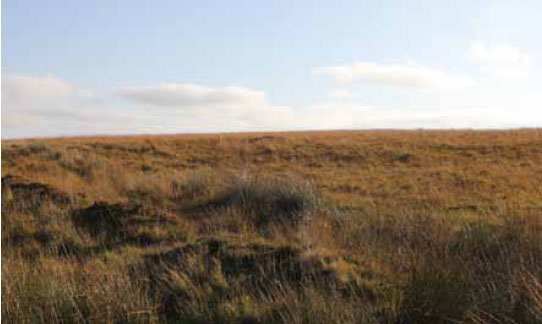
Photo B1.6 An area of grassland
8B1.39 Grass is a fine fuel which burns readily when cured and is strongly influenced by alignment with wind and slope. When grass burns fire spread can be rapid which presents a significant hazard. An important consideration when fighting fires in areas of grassland is the speed at which it can carry the fire into vegetation with higher fuel loading such as gorse, heather or trees, leading to a rapid change in fire behaviour.
8B1.40 Grass fires that are wind driven may spread rapidly within the upper parts of the vegetation; it is possible that the fire may not remove all of the fuel to ground level. This may result in sufficient vegetation being left to allow a second burn in the same area should there be a change in wind direction.
8B1.41 Coastal areas of grassland are strongly influenced by sea breezes and the undulation in topography. Personnel need to be aware that this can lead to frequent changes to fire behaviour.
8B1.42 If grass is very green, typically over 50% green, then it is unlikely to support fire spread, as the heat of the fire is used in drying the grass before it is able to ignite. However, when the grass is progressively cured it will support combustion and the rates of spread can increase dramatically.
| Characteristics |
|---|
| Light to moderate fuel loading (less than 6 tonnes per hectare - t/ha) |
| Mostly fine surface fuels |
| Maximum wind penetration |
| Low to moderate intensities |
| Rapid rate of spread |
| Short residual burning time |
| Limited short-distance spotting |
Crops (Class 2)
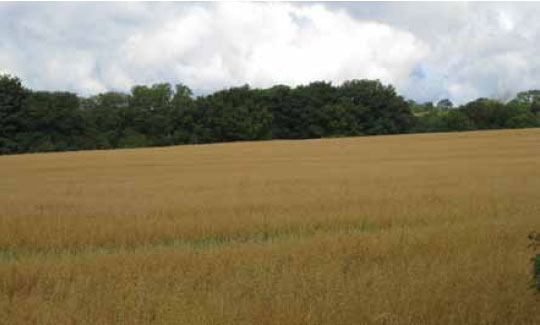
Photo B1.7 Uniformity of crops
8B1.43 Arable grassland, such as wheat or barley, can have a much higher fuel loading than that of natural grassland. Crops are densely arranged providing high fuel loads that can result in fires that are very intense. Generally, fires burning in crops are slower moving than those in more natural grassland but wind-driven crop fires can spread quickly.
8B1.44 Although slope still plays a part in fire intensity, its effect is reduced due to the fact that crops are generally planted on more level ground. Crop fuels are characterised by their uniformity in their horizontal and vertical arrangement, this type of fuel consistency means that there is little change to fire behaviour brought about by variations in the fuel formation.
| Characteristics |
|---|
| Moderate fuel loading (more than 6 t/ha) |
| Mostly fine surface fuels |
| Maximum wind penetration |
| Uniform fuel |
| Moderate to high intensities |
| Moderate rate of spread |
| Short residual burning time |
| Limited short-distance spotting |
Broadleaf and Mixed Woodland (Class 3)
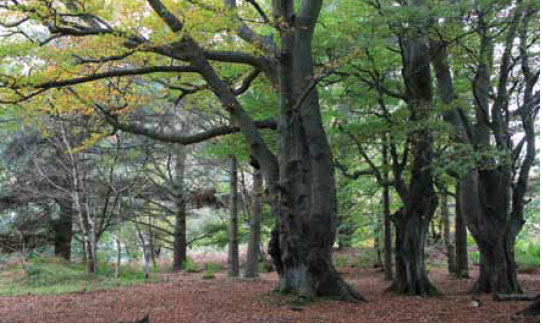
Photo B1.8 Broadleaf and mixed woodland
8B1.45 Broadleaf and mixed woodland is generally composed of deciduous trees such as oak, beech, sycamore and ash, although there may be pockets of conifer trees used as a nurse crop within the broadleaf woodland. Broadleaf woodland tends to be found in areas which have good soils and a plentiful water supply. Most, but not all, broadleaf trees are deciduous, losing their leaves in the autumn (expect holly). They are normally characterised by wide, flat leaves with veins extending through them. The leaves can be used to identify the individual species of broadleaf tree.
8B1.46 Broadleaf and mixed woodlands will generally demonstrate significantly different fire behaviour to coniferous woodland due to the lower quantities, and greater separation, of fine fuels found on the trees and importantly their leaves containing less flammable chemicals. Under normal spring and summer seasonal conditions, the leaves, which constitute the fine fuels of a broadleaf tree, will have high moisture content and will not readily burn making it more difficult for the tree's coarser fuels to become involved in a fire.
The surface litter, and ground vegetation, plays an important part in fire development and rate of spread in broadleaf woodlands, although this is likely to be very slow. If there are sufficient fine fuels such as leaf litter, fine twigs and grass at ground level then there is a possibility of significant fire spread through other available surface fuels.
8B1.47 Even in periods of drought or extreme weather, where other vegetation can act as ladder fuels, the resistance of broadleaf trees to support continued fire development is greater than that of coniferous woodlands. The resultant fire would be expected to be of lower intensity than a fire found in a coniferous woodland or plantation.
The management aims of broadleaf woodlands ranges from commercial timber production, field sport cover, conservation, landscaping etc. Trees that are not managed for timber production will tend to have a more wider spacing between trees than those found in plantations. Forestry operations such as pruning and thinning can further reduce fuel loadings. Both young and mature broadleaved trees are unlikely to see significant aerial fire activity and sustained crowning with the associated extreme fire behaviour being very unlikely.
8B1.48 Broadleaf and Mixed Woodlands are the most resilient classes to extreme fire behaviour and are regularly used as fire belts to fragment higher risk classes, such as coniferous woodlands, scrub and grasslands etc. Where broadleaved woodlands are naturally occurring in locations such as along streams and valleys, they can further improve the resilience of natural fire breaks.
| Characteristics |
|---|
| Moderate to high fuel loading |
| Trees have a generally rounded shape |
| Wide and flat leaves rather than slim thin needles |
| Slow growing |
| Fine and coarse surface fuels |
| Mixed fuel variation |
| Moderate wind penetration at surface level and high wind penetration in aerial fuels |
| Moderate to high fire intensities |
| Variations in rate of spread |
| Moderate to long burning time |
| Limited spotting, torching and crowning |
Coniferous Woodland (Class 4)
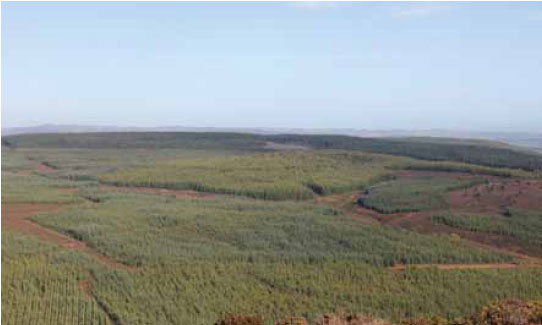
Photo B1.9 An example of planted coniferous woodland which contains huge quantities of fine fuels
8B1.49 Coniferous woodland can consist of variety of native species including native Scots Pine, Juniper and Yew and other non-native species such as Douglas Fir, Corsican Pine and Sitka Spruce.
8B1.50 Naturally occurring conifer woodland is usually, but not exclusively, found on acid sandy soil. If the tree canopy is open they will often have a healthy ground layer of other species such as heather, blaeberry (bilberry) bracken and other small shrubs.
8B1.51 The fuel complex within coniferous woodland differs significantly from that found in broadleaf and mixed woodland; a major difference being the amount of fine fuel that is available to burn in the form of live and dead pine needles and the flammable chemical composition of tannings, oils, alcohols and turpentines (similar to gorse) of the needles.
8B1.52 The fuel characteristics found within conifer woodlands vary with the vegetation's age. Increased fire intensity is likely in younger trees which are at the thicket stage. These young trees have branches growing near to the ground which can be ignited by fires burning in surface fuels. The fire can then move vertically through the fine fuel arrangement and into the aerial fuels above. If weather conditions are supportive, extreme fire behaviour is likely and this can include torching, crowning and spotting.
8B1.53 As the trees grow and mature they generally loose there lower branches and gaps can appear between the surface and aerial vegetation. This can reduce the amount of ladder fuels and prevent fire penetrating into the canopy.
8B1.54 It is important to recognise that fire behaviour in coniferous woodland will alter as the fire moves through trees of different age, species and management or where there are different surface fuels.
8B1.55 The majority of commercial timber production in the UK is usually of a single, or a limited number, of coniferous tree species. Trees are normally planted over large areas close together in a regimented formation, and in many plantations, the spacing between trees can be less than 2 metres. The very structure of the trees, and the way they are planted in close proximity to each other, can allow the fire to spread from tree to tree and the likelihood of extreme fire behaviour is significantly increased.
8B1.56 In older trees the connection with surface fuels will be diminished and forestry operations, such as pruning, brashing and thinning, can reduce fuel loadings and fuel ladders. It is important to note that these operations can also create a substantial amount of surface fuels called brash. These can support horizontal and vertical fire spread even in older woodlands with the possibility of an intense surface, or near surface fire, spreading into the canopy fuels. The strategic removal of brash is advised in high risk areas.
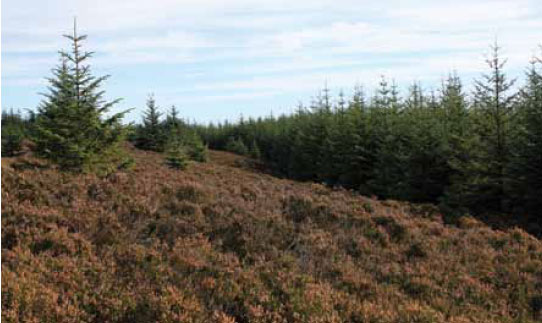
Photo B1.10 Torching and crowning is more likely in younger trees as vertical fire development is more probable
8B1.57 In areas where mature coniferous trees have closed canopy there is little light penetration resulting in only a limited amount of live vegetation with little or no shrub growth at surface levels. Again, this widens the ladder fuel arrangement and reduces the likelihood of vertical fire development. In these conditions only slow moving surface fires are likely which burn through the fallen needles.
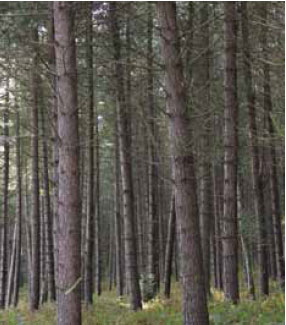
Photo B1.11 As trees mature the lower branches do not retain their foliage, a gap can gradually grow between the lower branches and the surface fuels nearer to the ground this creates a lack of ladder fuels
8B1.58 Across the UK it is common for coniferous woodlands to be thinned out every 5 years and then finally clear felled when economically viable. Clear felling to harvest timber can leave large amounts of surface fuels in situ, called lop and top. Remaining timber and lop and top can result in very intense fires and it can be difficult for fire fighting water to penetrate the burning mass effectively.
8B1.59 Thinning operations will result in more light being able to penetrate down to the surface which encourages a temporary build up of ground vegetation. As a result there may be the potential for trees and shrubs of various ages grow in the same area; this mixed arrangement can increase the amount of ladder fuels, until the tree canopies close once again.
| Characteristics |
|---|
| High fuel loading |
| Trees have a generally 'pointed' shape |
| Needles rather than leaves |
| Fast growing |
| Fine and coarse surface fuels |
| Large quantity of aerial fine fuels |
| Little wind penetration at surface level and high wind penetration within aerial fuels |
| High to extreme fire intensity |
| Likelihood of torching and crowning |
| Likelihood of some spotting as a result of aerial fire activity |
| Moderate to long term burning time |
| Age dictates variation in fire behaviour |
Heaths, Bogs and Moors (Class 5)
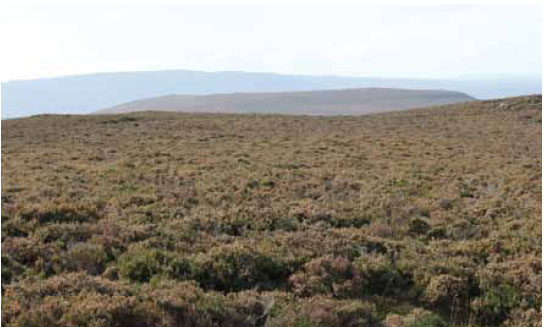
Photo B1.12 A large area of heather moorland
8B1.60 Heath, bog and moor, can be very similar in appearance. All can have similar vegetation and can be found in upland or lowland areas. The main difference is that heath is normally located on well drained sandy soils whilst bog and moorland are found in wetter areas where sphagnum mosses help retain water content and play an important role in the formation of peat.
8B1.61 Heaths bogs and moors support many different plant species, the most abundant being grass, bracken, gorse and small shrubs such as heather.
8B1.62 Unlike other vegetation types, heather and gorse are naturally flammable due to volatile compounds found within them. They may, therefore, burn with more intensity and at times of the year when other vegetation types will not.
8B1.63 Peat is commonly found in moor and heathland areas and is formed over many thousands of years from decomposed surface vegetation and sometimes can be of considerable depth. It is often covered by fuel that is susceptible to fire such as heather or grass. When ignited, these can transfer sufficient temperature into the soil to cause the peat layer to ignite. Once burning, peat can potentially support substantial underground fires that can continue to burn for many weeks, sometimes resurfacing considerable distances from the original point of ignition. Drained peatland areas are more susceptible to the risk of fire, particularly in the springtime, even if there has been significant rainfall through the winter months.
8B1.64 Environmentally, peat is a valuable resource acting as a carbon sink, if involved in a fire large amounts of pollutants and carbon dioxide can be released into the atmosphere.
| Characteristics |
|---|
| Moderate to high fuel loading |
| Fine and coarse surface fuels |
| Moderate to high wind penetration |
| Moderate to high fire intensity |
| Some spotting |
| Some crowning possible in dense shrubs |
| Short term burning time except in ground fuels |
| Potential for intense sub surface fires in ground fuels |
Scrub (Class 6)
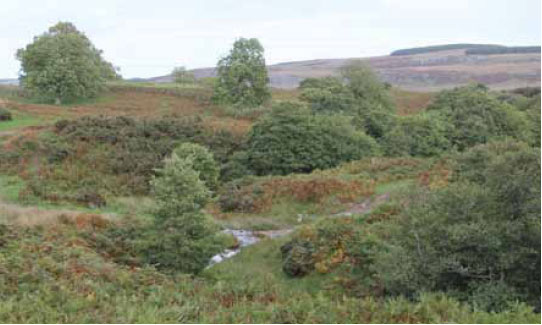
Photo B1.13 Lack of uniformity in scrub
8B1.65 Scrubland is a classification of fuel type that is common across most of the UK including urban areas. It usually consists of mixed vegetation types including grasses, gorse, shrubs and small trees and has a wide variation of species. A generic descriptive is an area of mixed vegetation found on the fringes of other classifications of fuel types or contained in pockets within them.
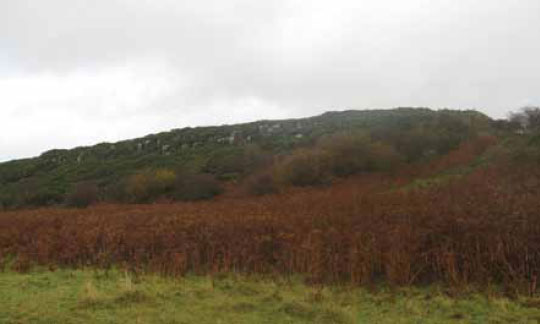
Photo B1.14 An area of scrub containing bracken and gorse
8B1.66 Such areas are of high risk as fire behaviour can be erratic with rapid changes to fire spread and flame length. In some areas of scrubland a particular plant species is dominant, for example large areas of gorse or bracken are common. Within these more uniform areas there is more consistency in the fire behaviour and a better opportunity to predict fire development.
8B1.67 Gorse is a common species of scrub across the UK and as it is naturally flammable can produce a particularly intense fire even at times of the year when other fuels may not burn - a swathe of green gorse scrubland may not necessarily act as a fire break. It is important to note that the seasonal nature of the flammability of these fuels is not fully understood and fire behaviour may therefore be erratic in what appears to be benign weather conditions.
| Characteristics |
|---|
| Moderate to high fuel loading |
| Fine and coarse fuels |
| Moderate to maximum wind penetration |
| Moderate fire intensity |
| Rapid changes to fire behaviour |
| Short term burning duration |
Live and Dead Fuels
8B1.68 In the wildfire environment fuel can be further divided into two other main categories and these are live and dead fuels. The main difference between the two categories is the way in which they react to changes in the atmosphere altering their potential for involvement in the combustion process.
Dead Fuels
8B1.69 Dead fuels are normally found on the surface of the ground but can also remain on or as a part of living vegetation.
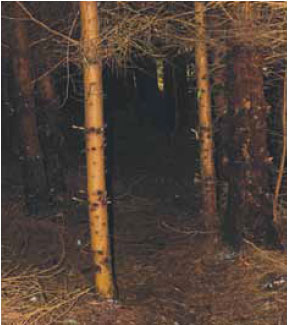
Photo B1.15 Photo of dead surface fuels; note there is a lack of growth both on the lower branches of the trees and on the ground, this is due to little light being able to penetrate through the canopy of the woodland
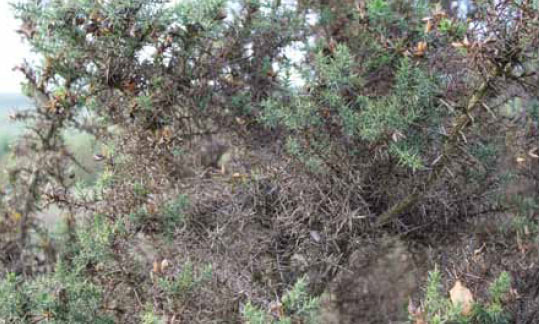
Photo B1.16 Gorse with dead fuels remaining on the plant
8B1.70 Dead fuels interact with the atmosphere searching for a balance between the moisture contained within the fuel and that which is held within the air. Therefore, when relative humidity is high they will generally absorb moisture, when the moisture content of the air is low they will release moisture back into the atmosphere.
8B1.71 The exchange of moisture, and in particular the drying out process, is also influenced by the size and shape of the fuel. Smaller fuels, particularly fine dead fuels will usually dry out much faster than coarser ones.
8B1.72 There are a number of factors which influence this exchange which include:
- The size and shape of the fuel
- The difference between the moisture contained in the fuel and that of the atmosphere
- Whether the fuel is in direct sunlight or is shaded from the sun
- How densely the fuel is arranged
- The moisture content of the soil the fuel is arranged upon
8B1.73 The exchange of moisture from the fuel to the atmosphere is a process that is relative to the difference in moisture content between the two. The effect of recent rainfall on heavier fuels will diminish over several days while finer fuels can dry out in hours. It is important to consider how previous weather conditions may have altered the moisture content of the fuel; this will help to understand how the fuel will behave when an ignition source is applied. If heavier fuels are wetter, finer fuels will have less capacity to ignite them, even if ignition occurs their behaviour will be reduced.
Higher moisture content can impair:
- Ease of ignition
- Rate of combustion
- Rate of spread
- Fire intensity
Free Water
8B1.74 Dead fuels when saturated can hold free water; this can surround the fuel or soak into its fibre which can slow the drying out process. This free water has to be dried first before the fuel's actual fibre construction can lose its moisture content.
Live Fuels
8B1.75 The atmosphere and weather conditions have a lesser effect on the moisture content retained within live fuels. Living plants although not immune to metrological conditions will regulate their own moisture content and do not readily absorb water. The water content within many plants is much higher than that contained within the air. The main influence of dryer conditions will be on the outer surface of the plant and particularly on the finer fuels contained in plant foliage. Nevertheless, during drought conditions the actual moisture content within live vegetation will diminish and ultimately can result in the destruction of the plant and in these situations fire behaviour can be altered significantly.
8B1 Key Considerations
- Fine fuels - those less than 6mm in diameter - dry out very quickly and are easily ignited.
- It is the fine fuels that are mostly responsible for the level of fire intensity and rate of spread
of a wildfire. - In areas where there are large amounts of fine fuel fire behaviour will be intense or extreme.
- Fine fuels that exist in the vertical fuel arrangement can quickly spread fire upwards into the aerial fuels.
- Fine fuels burn at the fire's edge igniting the coarser fuels, these burn with less intensity
but for longer. - Fires burning in fine fuels positioned on slopes which are 'in aspect' can move with
alarming speed. - Fuels positioned in the upper levels of the vertical fuel arrangement can be much drier
and warmer than the fuels at lower levels. - Dead fuels dry out more quickly and burn with more intensity than live fuels.
- Take note of the fuel type/arrangement you are working in and anticipate the fire behaviour that is likely to occur.
- Remember that fuel will generally become drier and warmer throughout the day leading
to an increase in fire intensity. - Consider the effects of weather and of topography on fuel, and anticipate how these will
effect fire development and behaviour. - The existence of available ladder fuels indicates that there is the potential for extreme
fire behaviour. - Observe and take note of the fire behaviour that occurs in the different fuel types and arrangements, relate this to the environment you are working in.
Contact
Email: Dean Cowper
There is a problem
Thanks for your feedback